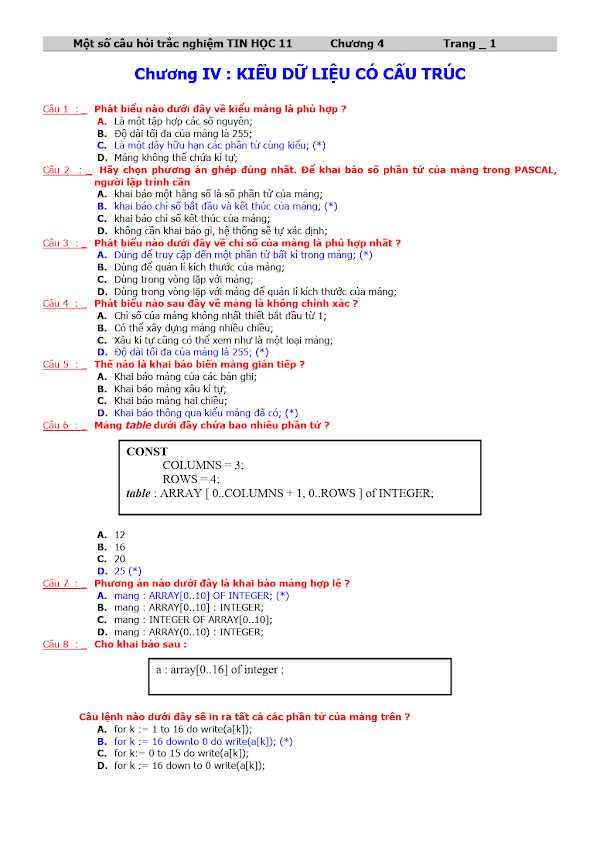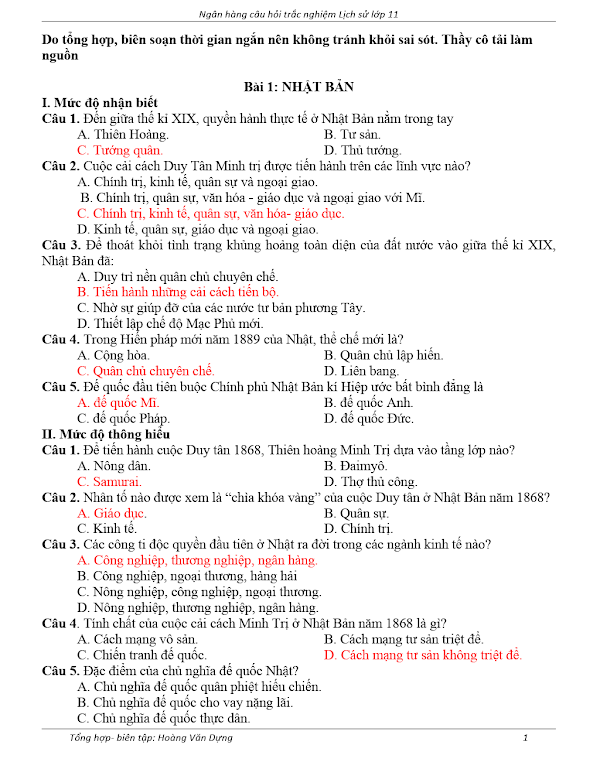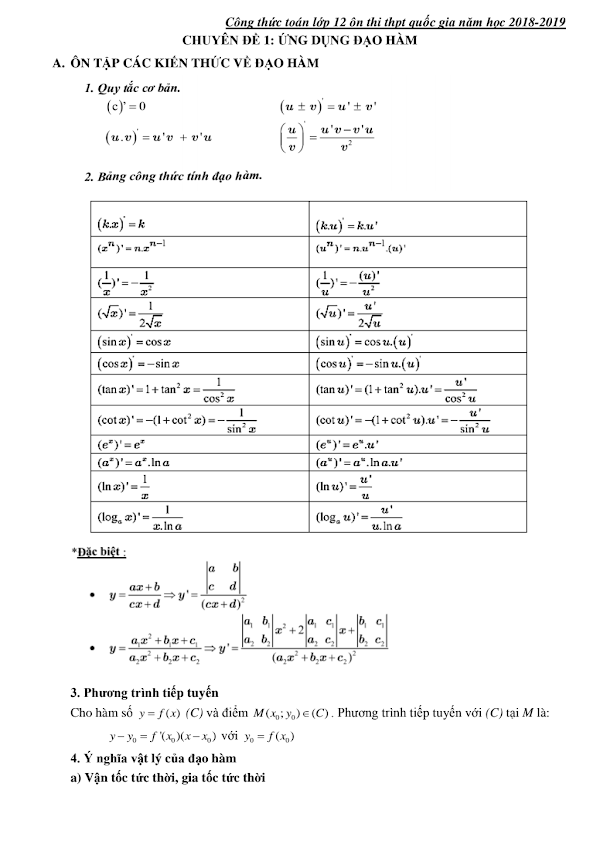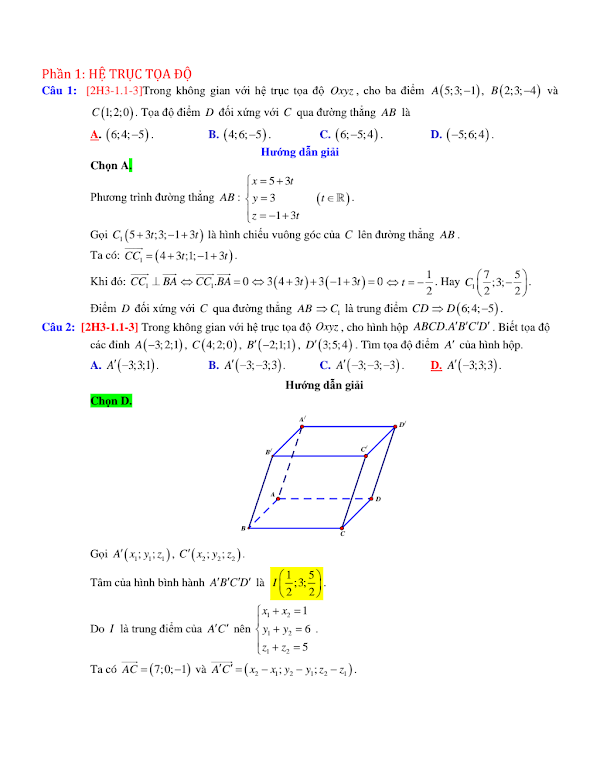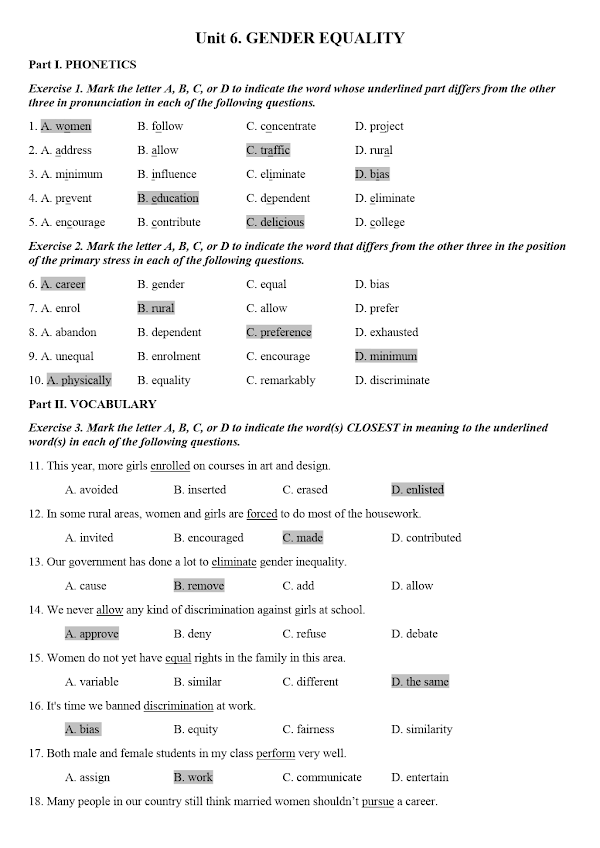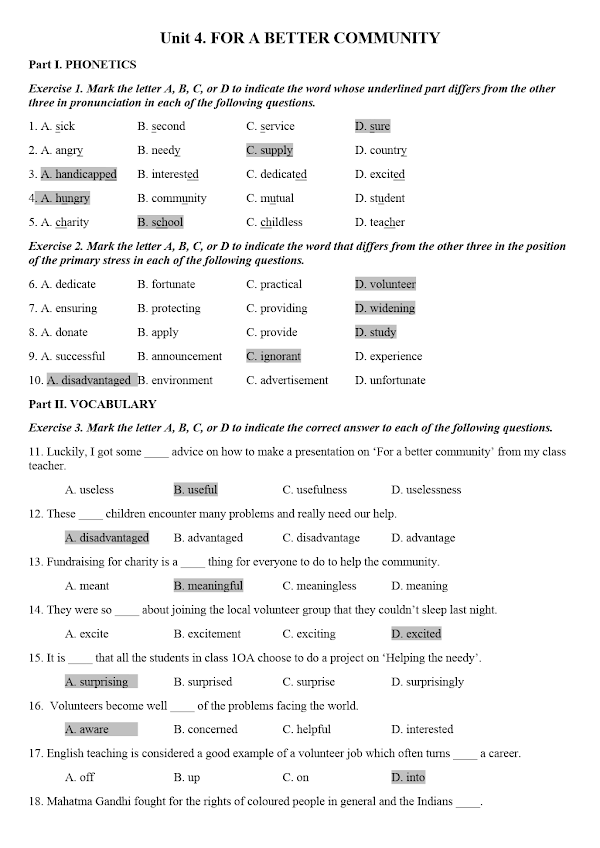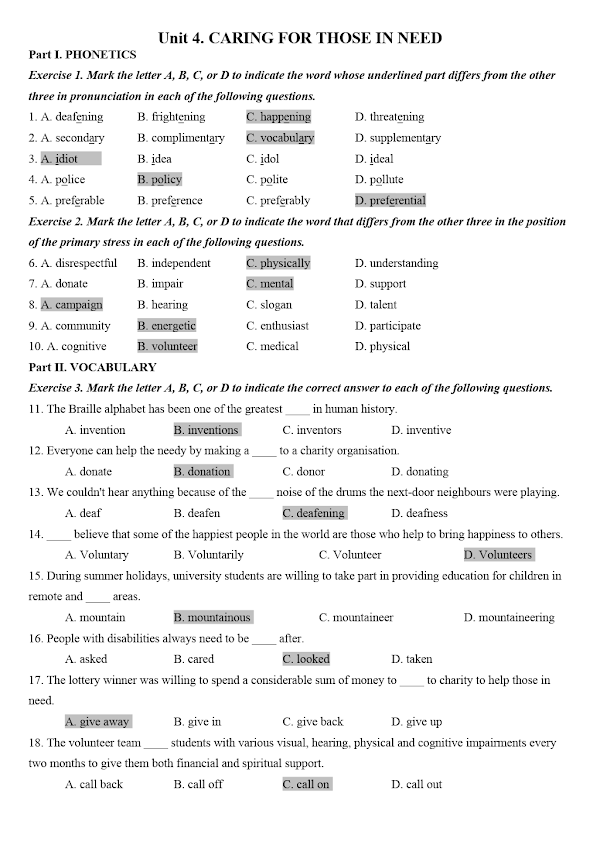Đề thi thử THPT QG môn Tiếng Anh trường THPT Thạnh Hóa - Long An
Chào các bạn học sinh và quý thầy cô, hôm nay LogaVN gửi tới bạn đọc tài liệu "Đề thi thử THPT QG môn Tiếng Anh trường THPT Thạnh Hóa - Long An.". Hi vọng sẽ giúp ích cho các bạn học tập và giảng dạy.
DEPARTMENT OF EDUCATION & TRAINING OF LONG AN PROVINCE
THẠNH HÓA HIGH SCHOOL
OFFICIAL(Including 5 pages)THE TRIAL TEST OF GCSE EXAMINATION
ACADEMIC YEAR 2018 - 2019
SUBJECT ENGLISH – 12
Time: 60 Minutes
Code 002
Full Name :............................................................... No : ...................
Mark the letter A, B, C, or D on your answer sheet to indicate the sentence that best combines each pair of sentences in the following questions.
Q1: Most scientists know him well. However, very few ordinary people have heard of him.
A. He is the only scientist that is not known to the general public.
B. Although he is well known to scientists, he is little known to the general public.
C. Many ordinary people know him better than most scientists do.
D. Not only scientists but also the general public know him as a big name.
Q2: Martin missed his flight because he had not been informed of the change in flight schedule.
A. Not having been informed of the change in flight schedule, Martin missed his flight.
B. Martin missed his flight, though he had been informed of the change in flight schedule.
C. Not having missed his flight, Martin was informed of the change in flight schedule.
D. Martin had been informed of his flight delay, which was due to the change in flight schedule.
Mark the letter A, B, C or D on your answer sheet to indicate the corresponding sentence to have the same meaning as the original one provided above in each of the following ones.
Q3: He cannot practice scuba diving because he has a weak heart.
A. Scuba diving makes him suffer from having a weak heart.
B. The fact that he has a weak heart cann
Page PAGE \* MERGEFORMAT 1/5 of Code 002
DEPARTMENT OF EDUCATION & TRAINING OF LONG AN PROVINCE
THẠNH HÓA HIGH SCHOOL
OFFICIAL(Including 5 pages)THE TRIAL TEST OF GCSE EXAMINATION
ACADEMIC YEAR 2018 - 2019
SUBJECT ENGLISH – 12
Time: 60 Minutes
Code 002
Full Name :............................................................... No : ...................
Mark the letter A, B, C, or D on your answer sheet to indicate the sentence that best combines each pair of sentences in the following questions.
Q1: Most scientists know him well. However, very few ordinary people have heard of him.
A. He is the only scientist that is not known to the general public.
B. Although he is well known to scientists, he is little known to the general public.
C. Many ordinary people know him better than most scientists do.
D. Not only scientists but also the general public know him as a big name.
Q2: Martin missed his flight because he had not been informed of the change in flight schedule.
A. Not having been informed of the change in flight schedule, Martin missed his flight.
B. Martin missed his flight, though he had been informed of the change in flight schedule.
C. Not having missed his flight, Martin was informed of the change in flight schedule.
D. Martin had been informed of his flight delay, which was due to the change in flight schedule.
Mark the letter A, B, C or D on your answer sheet to indicate the corresponding sentence to have the same meaning as the original one provided above in each of the following ones.
Q3: He cannot practice scuba diving because he has a weak heart.
A. Scuba diving makes him suffer from having a weak heart.
B. The fact that he has a weak heart cannot stop him practicing scuba diving.
C. He has a weak heart but he continues to practice scuba diving.
D. The reason why he cannot practice scuba diving is that he has a weak heart.
Q4: James was the last to know about the change of schedule.
A. Among the last people informed of the change of schedule was James.
B. At last James was able to know about the change of schedule.
C. Everyone had heard about the change of schedule before James did.
D. The last thing James knew was the change of schedule.
Q5: “Don’t forget to tidy up the final draft before submission,” the team leader told us.
A. The team leader reminded us to tidy up the final draft before submission.
B. The team leader ordered us to tidy up the final draft before submission.
C. The team leader simply wanted us to tidy up the final draft before submission.
D. The team leader asked us to tidy up the final draft before submission.
Mark the letter A, B, C, or D on your answer sheet to indicate the word CLOSEST in meaning to the underlined word in each of the following questions.
Q6: Deforestation is destroying large areas of tropical rain forest.
A. raising B. devastating C. polluting D. changing
Q7: Many species have become extinct each year before biologists can identify them.
A. discover B. endanger C. exploit D. destroy
Mark the letter A, B, C, or D on your answer sheet to indicate the most suitable words to complete each of the following exchanges.
Q8: Minh, a student, is going to take the GCSE exam today. His father is seeing him off at the bus station. Select the most suitable response to fill in the blank.
Dad: “Good luck with the exam, Minh!”
Minh: “……………., Dad.”
A. Thank you B. By no means C. Never mind D. I wish so
Q9: Jane had difficulty carrying her suitcase upstairs, and Mike, her friend, offered to help. Select the most suitable response to fill in the blank.
Mike: “Need a hand with your suitcase, Jane?”
Jane: “…………….”
A. Well done! B. Not a chance. C. That’s very kind of you. D. I don’t believe it.
Read the following passage and mark the letter A, B, C or D on your answer sheet to indicate the correct answer to each of the questions.
In 1826, a Frenchman named Niépce needed pictures for his business. He was not a good artist, so he invented a very simple camera. He put it in a window of his house and took a picture of his yard. That was the first photograph.
The next important date in the history of photography was 1837. That year, Daguerre, another Frenchman, took a picture of his studio. He used a new kind of camera and a different process. In his pictures, you could see everything clearly, even the smallest details. This kind of photograph was called a daguerreotype.
Soon, other people began to use Daguerre's process. Travelers brought back daguerreotypes from all around the world. People photographed famous buildings, cities, and mountains.
In about 1840, the process was improved. Then photographers could take pictures of people and moving things. The process was not simple and photographers had to carry lots of film and processing equipment. However, this did not stop photographers, especially in the United States. After 1840, daguerreotype artists were popular in most cities.
Matthew Brady was one well-known American photographer. He took many portraits of famous people. The portraits were unusual because they were lifelike and full of personality. Brady was also the first person to take pictures of a war. His 1862 Civil War pictures showed dead soldiers and ruined cities. They made the war seem more real and more terrible.
In the 1880s, new inventions began to change photography. Photographers could buy film ready-made in rolls, instead of having to make the film themselves. Also, they did not have to process the film immediately. They could bring it back to their studios and develop it later. They did not have to carry lots of equipment. And finally, the invention of the small handheld camera made photography less expensive.
With a small camera, anyone could be a photographer. People began to use cameras just for fun. They took pictures of their families, friends, and favorite places. They called these pictures "snapshots".
Documentary photographs became popular in newspapers in the 1890s. Soon magazines and books also used them. These pictures showed true events and people. They were much more real than drawings.
Some people began to think of photography as a form of art. They thought that photography could do more than show the real world. It could also show ideas and feelings, like other art forms.
From “Reading Power” by Beatrice S. Mikulecky and Linda Jeffries
Q10: The word “this” in the passage refers to the ……………..
A. taking of pictures of people and moving things
B. stopping of photographers from taking photos
C. fact that daguerreotype artists were popular in most cities
D. carrying of lots of film and processing equipment
Q11: The latest invention mentioned in the passage is the invention of ……………..
A. handheld cameras B. processing equipment
C. rolls of film D. daguerreotypes
Q12: Matthew Brady was well-known for ……………..
A. portraits and war photographs B. the small handheld camera
C. inventing daguerreotypes D. taking pictures of French cities
Q13: As mentioned in the passage, photography can ……………..
A. print old pictures B. show the underworld
C. replace drawings D. convey ideas and feelings
Q14: The word “lifelike” in the passage is closest in meaning to “…………….”.
A. realistic B. moving C. touching D. manlike
Q15: Which of the following could best serve as the title of the passage?
A. Different Steps in Film Processing B. Story of Photography
C. Story of Famous Photographers D. Photography and Painting
Q16: The first photograph was taken with ……………..
A. new types of film B. a very simple camera
C. a daguerreotype D. a small handheld camera
Mark the letter A, B, C or D on your answer sheet to indicate the correct answer to each of the following questions.
Q17: The Cosmonaut Training Center at Star City, Russia was named ………………. Gagarin.
A. with B. after C. to D. by
Q18: The students …………….. by the teacher yesterday were very rude.
A. punish B. punishing C. punished D. to punish
Q19: ………………. taught me how to play the guitar.
A. It was my uncle whom B. It was my uncle
C. It is my uncle who D. It was my uncle that
Q20: Their house is …………….. decorated.
A. beautifully B. beautify C. beauty D. beautiful
Q21: This multi-sport event is an occasion when friendship and ………………. are built and promoted.
A. stability B. acceleration C. enthusiasm D. solidarity
Q22: We have just bought some ……………. cups.
A. old lovely Chinese B. Chinese lovely old C. lovely old Chinese D. Chinese old lovely
Q23: No one gave you any gift on your birthday, ……………….?
A. did they B. didn’t them C. didn’t they D. did it
Q24: It’s very warm. We …………….. take coats with us.
A. mustn’t B. needn't C. must D. may
Q25: It gets ……………. when the winter is coming.
A. cold and less cold B. colder and colder C. cold and colder D. more and more cold
Q26: My younger sister is not ……………. to study overseas.
A. old enough B. too old C. so old D. enough old
Q27: All fossil fuels are ………………. resources that cannot be replaced after used.
A. renewable B. non-renewable C. plentiful D. abundant
Q28: . …………….. species are plant and animal species which are in danger of extinction.
A. Endangered B. Dangerous C. Dangerously D. Endanger
Read the following passage and mark the letter A, B, C or D on your answer sheet to indicate the correct answer to each of the questions.
TEACHING IN INDIA
by Elise Cooper
‘Elise in India’. That was the name of my blog last year when I took a year out between school and university. I was lucky enough to get a teaching job abroad through an international organization. I was going to work in a school attached to a children’s home in north-west India. There were eight of us on the week-long introduction course in the capital, Delhi. As well as advice and ideas for teaching we were given information about health and local customs, and learned a few essential phrases in the local language.
Another course member, Lucy, was coming to the same school as me and we were both nervous when we set off on the 15-hour bus ride to the children's home. I had worked as a classroom assistant before, but here I wouldn't be much older than some of my pupils. How would I manage? My worries disappeared once we reached the home. Our rooms were on the top floor above the girls' bedrooms and from the window we looked out across flat fields full of fruit trees and could just see the snow-covered mountain tops in the distance.
There were 90 children in the home, aged between five and 20. In addition there were a small number of pupils who came in each day from the area around. Although they were a little shy to start with, they were so keen to ask us questions that we quickly became friends.
Lucy and I taught four lessons a day, mainly spelling, reading and general knowledge. We had a textbook but since it wasn't very exciting, we tried to make the lessons more interesting with activities and games. This wasn't always easy: there was a mixture of ages in each class because pupils had begun their education at different times. Like schoolchildren everywhere, they didn't always behave perfectly in class. However, they used to send us notes apologizing afterwards, or thanking us for an interesting lesson, so we didn't really mind.
The best fun came after school, though. We spent many happy hours playing games or football or just chatting with the children. On Friday afternoons, Lucy and I were in charge of sport, which had just been introduced at the school. Trying to organize fifty children into cricket teams is something I'll never forget. Another of my memories is playing in goal for a boys' football game. Even though Lucy and a group of little girls joined in as extra goalkeepers, we still managed to let the other side score!
I was terribly sad to leave. I felt I had learned as much as - if not more than - my pupils from the experience.
Q29: What does “This” in paragraph 4 refer to?
A. the lessons in the textbook B. the general knowledge
C. the pupil’s education D. the way to make the lessons more attractive
Q30: Elise and Lucy were responsible for teaching the following lessons except……………...........
A. reading B. history C. spelling D. general knowledge
Q31: Which adjective best describes the job of getting pupils’ attention to the general knowledge lessons?
A. time - consuming B. effortless C. simple D. challenging
Q32: According to the text, the pupils in each class that Elise taught were………………….
A. all older than her B. all adolescents C. at the same age D. at different ages
Q33: What can be inferred about Elise according to the text?
A. She spent one year in India. B. She is not Indian.
C. She is now working in Delhi. D. She can speak the local language well.
Q34: According to Elise, what do Indian pupils and schoolchildren everywhere have in common?
A. interests in games and activities B. background knowledge
C. imperfect behavior in class D. shyness and nervousness
Q35: Which of the following words would the author most probably use to describe her experience in India?
A. nonsense B. informative C. useful D. problematic
Q36: How did Elise apply for the teaching post in India?
A. Through a local organization B. By posting her resume’ online
C. By contacting directly with the school D. Through an international organization
Mark the letter A, B, C, or D on your answer sheet to indicate the word(s) OPPOSITE in meaning to the underlined word(s) in each of the following questions.
Q37: It is impolite when you ask an American about their age, marriage and income.
A. friendly B. courteous C. thoughtful D. rude
Q38: We offer a speedy and secure service of transferring money in less than 24 hours.
A. unlikely B. unimportant C. unsure D. unlimited
Mark the letter A, B, C or D on your answer sheet to indicate the word whose main stress is placed differently from that of the rest in each of the following questions.
Q39: A. namely B. leading C. diverse D. justice
Q40: A. applicant B. investment C. domestic D. commercial
Mark the letter A, B, C or D on your answer sheet to indicate the word whose underlined part is pronounced differently from that of the rest in each of the following questions.
Q41: A. species B. cultures C. earthquakes D. medicines
Q42: A. adopted B. appealed C. considered D. combined
Mark the letter A, B, C or D on your answer sheet to show the underlined part that needs correction.
Q43:
It’s a company its logo features a red kangaroo.
A B C D
Q44:
The book offers a fascinated sight of the lives of the rich and famous.
A B C D
Q45:
As soon as Jane will graduate in July, she is going to travel to Vietnam for her holiday.
A B C D
Read the following passage and mark the letter A, B, C, or D on your answer sheet to indicate the correct word for each of the blanks.
Millions of people of all ages enjoy a hobby which is both interesting __( 46 )__ fun. And every year, more and more people start a stamp collection on their own and discover an interest which can last a lifetime. Starting your collection is easy __( 47 )__ stamps can be found everywhere. Holiday postcards from friends, birthday cards from relatives and letters from pen pals can all __( 48 )__ you with stamps from all over the world. But once you have started collecting __( 49 )__, you will probably want to join the Stamp Collectors’ Club __( 50 )__ exists to provide collectors with new British stamps.
Q46: A. or B. also C. but D. and
Q47: A. moreover B. because C. although D. furthermore
Q48: A. provide B. take C. give D. consider
Q49: A. attractively B. competitively C. greatly D. seriously
Q50: A. what B. when C. which D. where
THE END
1B2A3D4C5A6B7A8A9C10D11A12A13D14A15B16B17B18C19D20A21D22C23A24B25B26A27B28A29D30B31D32D33B34C35C36D37B38C39C40A41C42A43B44A45B46D47B48A49D50C

